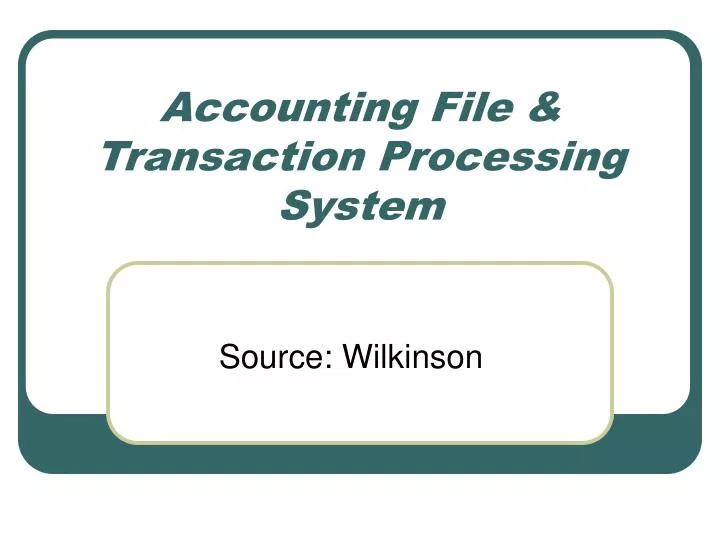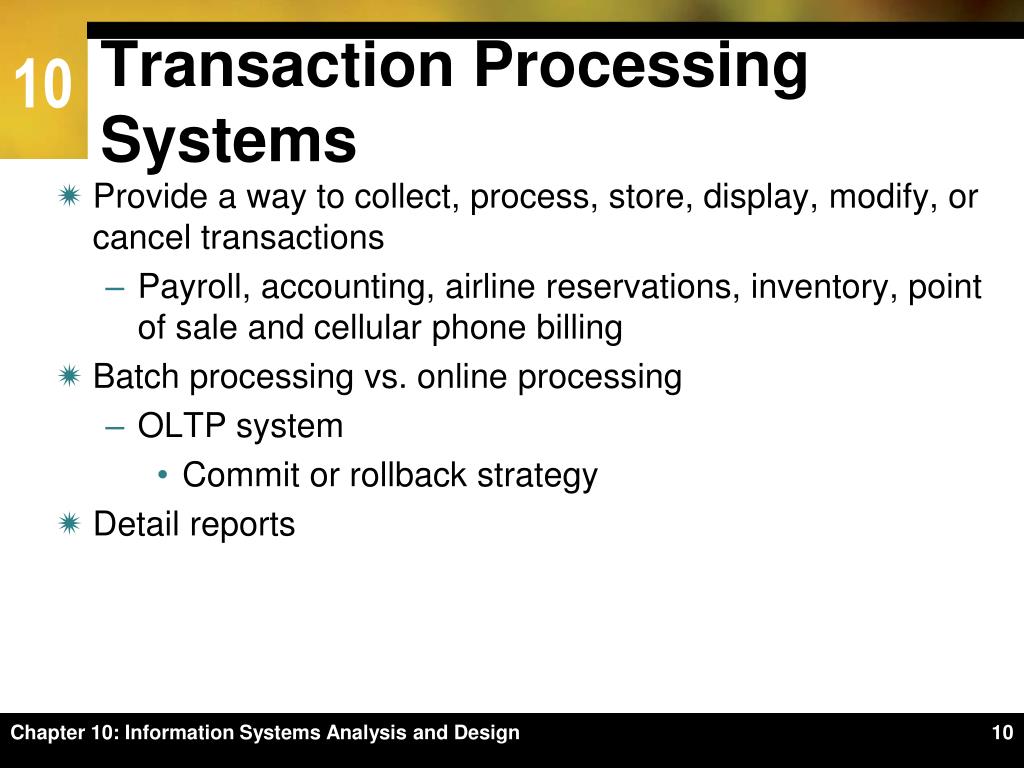

Some of these applications provide metrics and other important information in dashboards that managers use to assist in the daily planning and execution of operations.
#Financial transaction processing system software#
While it is not always financially feasible, many businesses adopt sophisticated Enterprise Resource Planning software that helps to manage transaction processing across various departments in real-time. Often businesses add systems as they grow larger, resulting in disparate systems that do individual processes well but do not provide insight across interconnected departments. Many of these systems also provide critical data between departments in real-time allowing for greater communication and efficiency while reducing risk. The need for financial controls exists at various levels within each transaction process and across different business units adding additional complexity to the financial ecosystem.īecause of this, it has become common for businesses to invest in technology helping to manage all of the transaction processing that takes place. Using Technology to Manage Transaction ProcessingĪs we touched on above, transaction processing results in a high volume of accounting entries and financial oversight. By timing payments to be made to vendors slower than payments are received from customers it puts significantly less cash demand on a business. This means that effective payment management can actually allow businesses to use their receivables to finance their payables. Typically, businesses work to manage their receivables ahead of their payables. A business with a great product and high sales volume can actually fail if they do not manage their payments effectively. Importance of Accurate Payment Trackingįinally, accurate payment tracking is absolutely critical. This means that the majority rely on the receipts that they receive and produce to reconcile timing differences that occur between the time a receipt is received or produced and when money is received or paid. Very few businesses operate on solely a cash basis. This is because the timing of receipts and payments is almost always different. Receipts from purchases and sales are critical when maintaining accurate accounting records.

Transactions occur at various levels in the procurement process and they must be accurately reflected in the business’s various systems. Supply chain professionals work diligently to manage inventory levels effectively to not inhibit the business with unnecessary costs. Importance of Accurate Purchasing ProcessingĪs businesses make sales and deplete inventory they need to acquire more materials to replenish inventory that has been sold.

Accurate record keeping must be maintained throughout the sales process to ensure that customers receive their orders and businesses receive their payments.Īdditionally, accurate sales processing has a direct impact on the amount of inventory held by the business and the amount of raw materials needed to produce each product. Behind each sale is a variety of activities. Businesses process large volumes of transactions every day that range across each of the four categories. The accurate reflection of the four general transaction types in a business’s accounting records is critical. Processing transactions is a primary concern for all finance and accounting ecosystems. This puts a great deal of demand on finance and accounting departments as the variety, complexity, and timing of transactions result in a need to manage many tasks. The tern is broad and is used to describe activities across business units that are reflected in the accounting records. Gartner has broken transaction processing into four distinct types: sales, purchases, receipts, and payments. In finance, the term is used to describe the range of activities central to a business’s accounting and financial operations.

The term transaction processing has various meanings across industries. In this post, we will cover what transaction processing is, why it is so important to manage effectively, and how technology is being used to assist finance professionals in managing these processes more effectively. Well-managed transaction processing is the result of dedicated finance and accounting departments working together to integrate a variety of tasks while introducing various controls to mitigate risk. One of the primary purposes of a finance and accounting ecosystem is to capture transaction processing accurately and in a timely manner.


 0 kommentar(er)
0 kommentar(er)
